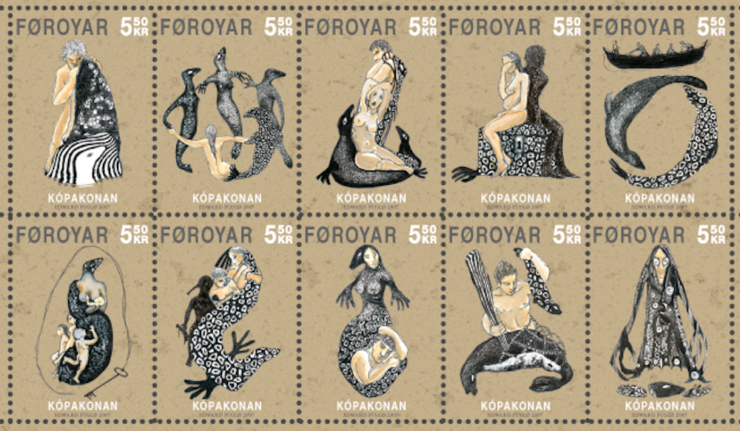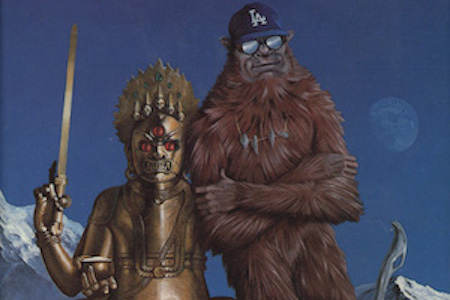Most of the shapeshifter narratives I’ve come across have focused on creatures of the land and the air—wolves, big cats, bears, various birds. Diane Duane’s Deep Wizardry does wonderful things with whale shifters, and I’ve seen a dolphin shifter mentioned in an urban fantasy or two. But there’s one shifter who doesn’t show up much if at all in urban fantasy, and who somewhat surprisingly doesn’t have a strong presence in shifter romance.
That shifter is the selkie. She—it’s often a she, though it can be a male as well—appears in two forms, as a human and a seal. The native form appears to be the seal form, and that’s the shape that swims in the sea. When the selkie comes on land, she sheds her skin and becomes a human.
Shapeshifters achieve the change in a number of ways. The werewolf can be born that way, or he (it’s usually he) can be infected with the curse through the bite of another werewolf. For the most part he can’t control the change; it’s often brought on by the full moon, and once he shifts, he usually loses his human intelligence. Other shifters may be able to change by willing it, as Nita does in Deep Wizardry. For still others, the catalyst may be a spell or a magical object, a talisman that focuses and forces the change.
The selkie, somewhat like the Native American skinwalker, transforms by putting on or taking off the skin of a seal. If the skin is lost or stolen, the selkie is trapped in human form. She can only become a seal again if she finds her skin.
The skinwalker has an evil reputation, and practices black magic. The male selkie can be dangerous; he may seduce a human woman and have children with her, and take those children away into the sea. The female selkie is a more benign and often tragic figure, a magical representation of the woman abducted and married by force.
Buy the Book


The Navigating Fox
In these stories, which are told in the far north of the world, in the British Isles and Scandinavia and on up into Iceland, a human man finds a woman by the sea, steals her sealskin and hides it, marries and has children with her. One day, inevitably, she finds the skin where he has hidden it, either on her own or with the help of her children. She puts it on and goes back home to the sea.
The selkie’s native form is that of the seal. Humanity is a secondary state, and can become a curse if she loses her sealskin. In that way she’s different from the broader range of shifter species, especially the werewolf. Most of those start off human and spend a great deal of energy trying to get back to that form; even when the shift is voluntary and the powers of the animal form are welcomed and celebrated, it’s still the human that’s the default. It’s rare to find one that goes in the other direction.
Urban-fantasy shifters may live on the fringes of human society, but they tend to gravitate toward population centers. They live in or around cities. They interact with humans en masse, and often with other supernatural beings as well. They often congregate in packs. They’re social beings; it’s rare for any of them to live alone or in the remote places of the world.
The selkie is a creature of the world’s edges. When she comes to land, it’s on remote islands and isolated fishing villages. She stays away from the shipping lanes, and you won’t see her in coastal cities. She’s a rare and wild thing, with a magic that might be captured, but it can never really be tamed. The moment she finds her skin, she’s off to sea again.
Of all the shifters, she’s one of the most elusive. She may be a fallen angel, she may be a faery spirit. Or maybe she’s a way of explaining children born with webbed fingers or scaly skin, or else she’s a trick of the eye, a seal’s head surfacing on the edge of vision, looking like a human swimmer with water-slicked hair. She’s no more human than the sea, and no less magical.
Judith Tarr is a lifelong horse person. She supports her habit by writing works of fantasy and science fiction as well as historical novels, many of which have been published as ebooks. She’s written a primer for writers who want to write about horses: Writing Horses: The Fine Art of Getting It Right. She lives near Tucson, Arizona with a herd of Lipizzans, a clowder of cats, and a blue-eyed dog.














